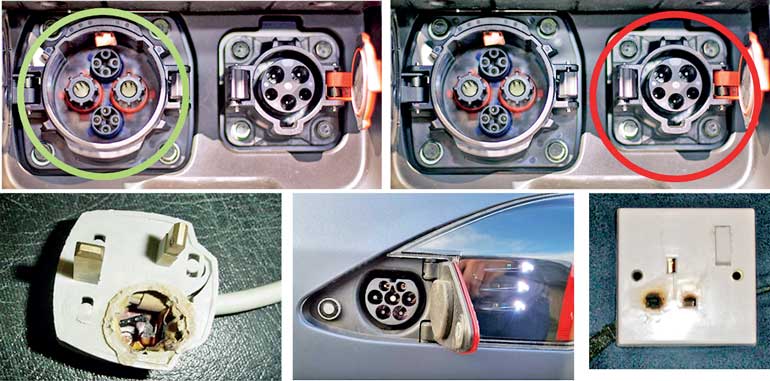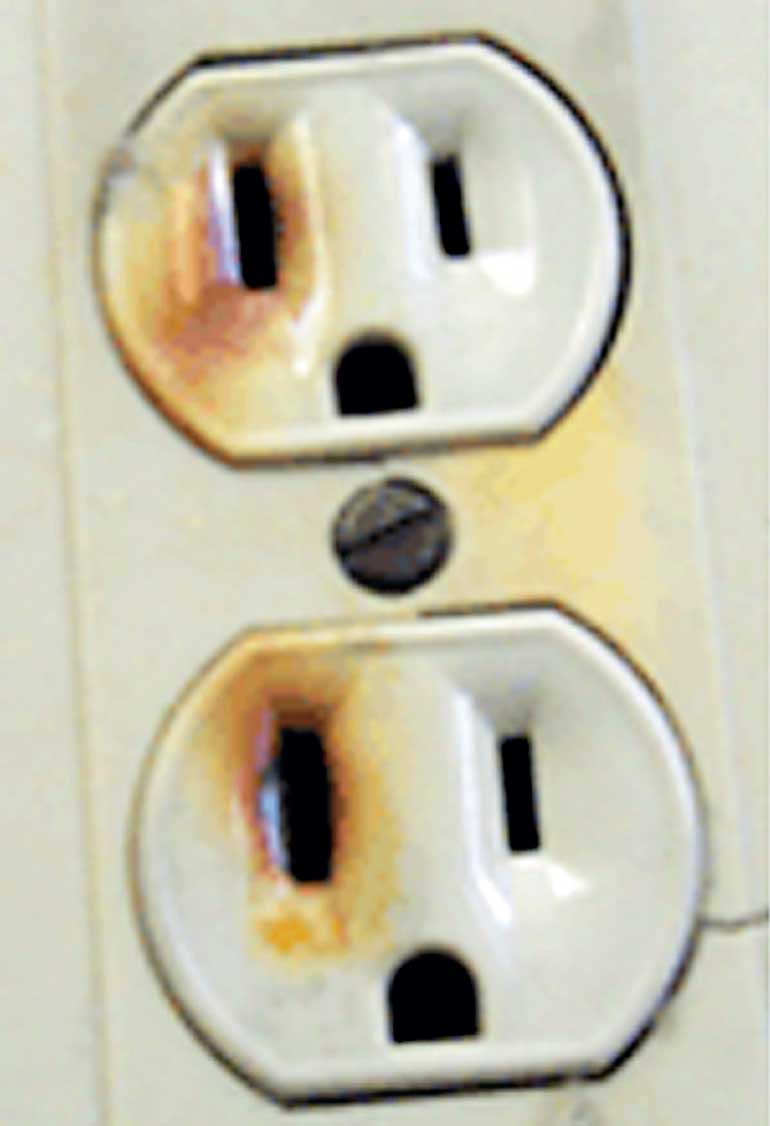Thursday Mar 13, 2025
Thursday Mar 13, 2025
Friday, 17 November 2017 00:00 - - {{hitsCtrl.values.hits}}

 With the new ‘Blue-Green Budget’ for 2018, Sri Lanka is taking a leap to the future to ensure that we leave behind a sustainable and environmentally friendly landscape for future generations. Increased levies on large capacity engines, the implementation of a carbon tax, and a reduction in electric vehicle taxes are some of the few hallmarks of “going green”.
With the new ‘Blue-Green Budget’ for 2018, Sri Lanka is taking a leap to the future to ensure that we leave behind a sustainable and environmentally friendly landscape for future generations. Increased levies on large capacity engines, the implementation of a carbon tax, and a reduction in electric vehicle taxes are some of the few hallmarks of “going green”.
With the significant reduction in EV import duties, it won’t be long before the mass public is swept up in an EV extravaganza. However, before everyone starts buying an electric vehicle, it’s important to understand the infrastructure needs that must be put in place. The infrastructure, especially the charging infrastructure, must be adopted with a well-designed regulatory framework in place. These must take into account public safety, fire hazards, vehicle safety (battery and electronics), while delivering an optimum level of convenience to the public.
One of the benefits of the Electric Vehicle, aside from not having to worry about fuel shortages, is that it chargers like any normal electronic device. You just have to connect a charging cable from your charger to the vehicle. And just like most electrical appliances, different regions have specific standards that must be met, due to the various power supplies; line voltages, electricity limits. As an example, most Japanese appliances run at 110V/60HZ so they are not recommended for the Sri Lankan market, which operates at 240V/50HZ.
Electric Vehicle charging equipment are specified by various plug types, for their respective regions that are delineated by line voltage and/or current rating, called Type 1 through Type 4.
Type 1: Type 1 connectors are found in EVs manufactured for the North American and Japanese markets. These markets have a household supply (normal grid voltage) of 110V-120V.
Some Type 1 vehicles can be charged through a dedicated Charging Equipment that can operate at 230V-240V  (from Dual/split phase supply of 120V line) and at 20A (standard high current Sri Lankan households are wired to deliver 15A only). Manufacturers clearly request the vehicle owner to have the unit installed by a certified electrician to ensure that right procedures and codes are followed to avoid dangerous situations from arising. Charging times with Type 1 can take from 4 hours to 21 hours.
(from Dual/split phase supply of 120V line) and at 20A (standard high current Sri Lankan households are wired to deliver 15A only). Manufacturers clearly request the vehicle owner to have the unit installed by a certified electrician to ensure that right procedures and codes are followed to avoid dangerous situations from arising. Charging times with Type 1 can take from 4 hours to 21 hours.
Type 2: Type 2 connectors are found in the European Union, Australia, and since of late in Singapore. Type 2 was designed for markets with a national household supply (line voltage) of 230-240V, or 380-440V with three phase connections. Type 2 socket and connector allows for average home charging from six hours to two hours and also a “semi fast” charging in 1 hour at public locations. These also allow for fast charging with a combined socket (CCS2).
Type 3: Found in some parts of Italy and France but phased out due to Type 2 becoming the EU standard.
Type 4: Also known as DC fast charging, this is commonly found with Type 1 sockets. Type 4 chargers can only be used in public locations due to their high power requirements (from 40kW up to 150kW). These chargers can top up your average EV battery in less than 30 mins so they are quite convenient, but there is a disadvantage; the more times you charge the battery with a fast charger, the shorter your total battery lifespan.
Choosing the right standard: With all these various types, one might wonder what exactly is Sri Lanka’s standard for Electric Vehicles and Charging? At this time, we simply don’t have one. The Public Utilities Commission of Sri Lanka (PUCSL) is currently looking into setting up regulations and standards but the new “Blue-Green” Budget has skipped that process all together. It is imperative that the standards are adopted and the commercial as well as private charging equipment deployed are regulated and enforced to meet the standards.
A majority of all-electric vehicles that are found in Sri Lanka are of Japanese origin. Therefore, one may be tempted to set Type 1 as the standard. However, this was designed and adopted for the Japanese and North American markets, having an entirely different grid supply, generally a Type 1 charger should not be plugged into any household outlet in Sri Lanka. Connecting an EV charger without fully knowing what your household supply can lead can lead to extremely hazardous situations. Use of poorly protected outlets and/or extensions codes too can lead to hazardous and dangerous situations. Shown below are the results of over drawing from lower rated outlet/plugs.
As Type 2 is designed for same line voltage as found in Sri Lanka, it could be adopted as the best standard for this market. It complies with Sri Lanka’s grid, 230V-240V single- phase and 380V-440V three- phase. , EV owners can plug their Type 2 Charging Cable directly into an appropriately rated household outlet without having to worry about the voltage. They can use the same charging socket at public charging stations since Type 2 also allows for semi fast charging. However, the necessary studies must be carried out by the relevant authorities relevant authorities must carry out the necessary studies in order to determine the most appropriate standard for Sri Lanka.
However, if the Type 2 is adopted as the Local Standard, what does it do to 4,000+ EVs that are designed for the Japanese market? An interim standard must be adopted until all EVs imported or locally manufactured adhere and comply with a single, uniform standard. In the interim the government could look into setting up dedicated Type 1/Type 4 2 charging points (that are built to specific codes and regulations) to ensure that Type 1 EV owners are not left out, and slowly shift them to the national EV Standard. Similar approaches have been carried out in Germany and Singapore with the assistance of companies like Bosch who manufacture charging stations designed to comply with regulations in these countries. .
One might wonder why authorised dealers for vehicle manufactures are not selling their all-electric vehicles in Sri Lanka. It is primarily due to the lack of any EV/EV Charging regulations and standards. Yes, one manufacturer does sell an EV in Sri Lanka but there’s a catch, that model comes with a small petrol engine that charges the battery up.
An EV owner cannot service or repair an EV at a licensed dealership. Understandably the manufacturer, the authorised dealer, cannot take the responsibility for damages caused to the car or its systems due to consumers that may plug the car to any charger or charging station that does not meet standards required for the vehicle. It is similar to petrol or diesel cars having some minimum threshold for having the correct type of petrol/diesel available for the vehicle at fuel stations, a standard mandated by the regulator and enforced by the authorities concerned.
The Sri Lankan Government has taken the right steps to ensure we go full electric by 2040. It is a lofty goal, an achievable one, which will serve the public and the environment well going forward. It is also therefore it is vital to ensure the proper regulations and standards that ensure safety of the consumer and the relating to Electric Vehicles are adopted and enforced. A priority is to adopt regulations governing charging stations that will address consumer safety and charging are adopted.
This article primarily covered the standards that relate to the consumer and its safety and that of the equipment, the standards that must be adopted must also consider the integrity of the grid that can be ensured by having the charging infrastructure meet industry standards for chargers, its electronics and quality. In the absence of correct regulations, we will expose the public to an unwarranted risk.
[The writer is the founder and the Managing Director of Sustainable Alternatives Ltd., a project development company dedicated to deploying sustainable technologies in waste-to-energy understanding the technologies as well as the societal impact of adopting these technologies.]
Discover Kapruka, the leading online shopping platform in Sri Lanka, where you can conveniently send Gifts and Flowers to your loved ones for any event including Valentine ’s Day. Explore a wide range of popular Shopping Categories on Kapruka, including Toys, Groceries, Electronics, Birthday Cakes, Fruits, Chocolates, Flower Bouquets, Clothing, Watches, Lingerie, Gift Sets and Jewellery. Also if you’re interested in selling with Kapruka, Partner Central by Kapruka is the best solution to start with. Moreover, through Kapruka Global Shop, you can also enjoy the convenience of purchasing products from renowned platforms like Amazon and eBay and have them delivered to Sri Lanka.
Discover Kapruka, the leading online shopping platform in Sri Lanka, where you can conveniently send Gifts and Flowers to your loved ones for any event including Valentine ’s Day. Explore a wide range of popular Shopping Categories on Kapruka, including Toys, Groceries, Electronics, Birthday Cakes, Fruits, Chocolates, Flower Bouquets, Clothing, Watches, Lingerie, Gift Sets and Jewellery. Also if you’re interested in selling with Kapruka, Partner Central by Kapruka is the best solution to start with. Moreover, through Kapruka Global Shop, you can also enjoy the convenience of purchasing products from renowned platforms like Amazon and eBay and have them delivered to Sri Lanka.